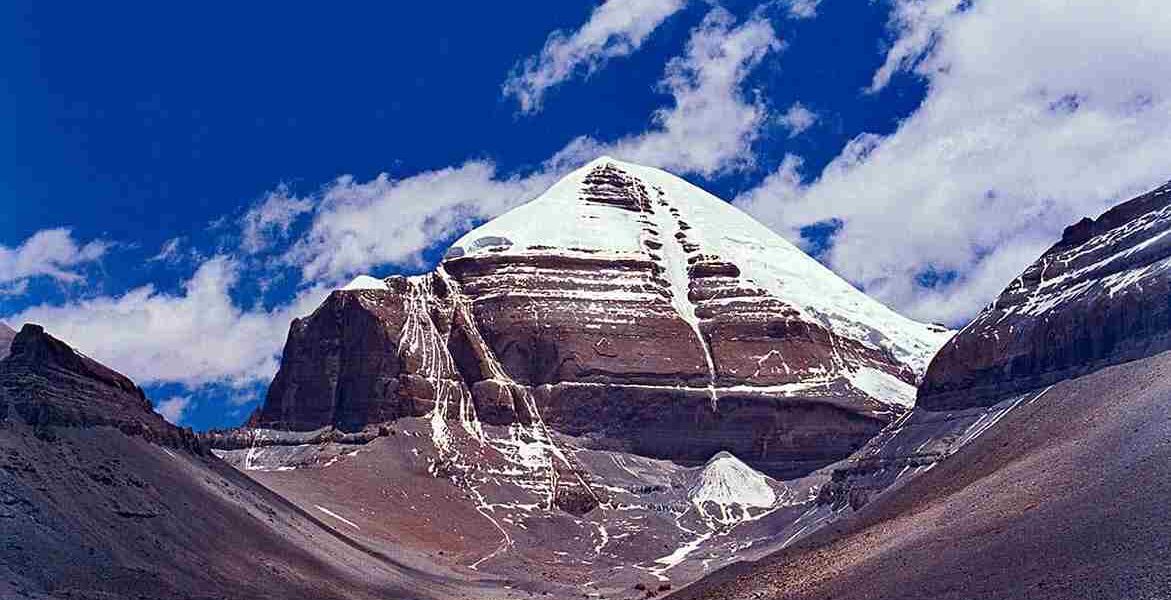Kailash is more than a pilgrimage; it is a pilgrimage. It is an odyssey deep into the soul, a journey through a timeless landscape, and a test of inner strength. For Hindus, Buddhists, Jains, and Bon followers, Kailash is more than a mountain; it is a mountain. It is the axis of the world, the center of the universe connecting the material and spiritual worlds.
The Spiritual Appeal of Kailash
Mount Kailash stands 6,638 meters above sea level, in a remote area of the Tibetan Plateau. In Hindu mythology, it is revered as the abode of Lord Shiva and Goddess Parvati. For Buddhists, it is the place of Demchok, symbolizing supreme bliss. Jains revere it as the place of Rissabudeva’s liberation, and Bon considers it a holy mountain.
The neighboring Mansarovar Lake is considered the highest freshwater lake in the world and is believed to have been created by the god Brahma. Bathing in its icy waters is said to cleanse a lifetime of sins and bring spiritual renewal.
The Journey Begins
The pilgrimage requires careful physical and mental preparation. The high altitude, unpredictable weather and challenging terrain test even experienced travelers. Popular routes are:
Via Nepal: Passing through Kathmandu and then to the Tibetan border.
To India (Liplekh Pass): Organized by the Indian government, this leg is longer but worth it.
To Lhasa: A more relaxing option through the Tibetan capital.
I chose the Nepal route, which attracted me with its combination of spirituality and adventure.
From Kathmandu to Tibet: Breathtaking Scenery
The journey from Kathmandu to the Tibetan border is filled with green mountains, terraced fields and bustling mountain towns. In Tibet, the landscape changes to vast barren plains dotted with snow-capped peaks.
When I reached Darchen, the base camp of Mount Kailash parikrama, I was struck by the magnetic force of the holy peak. Awe filled the air as pilgrims from all over the world gathered.
Kailash Parikrama: A Divine Wandering
Parikrama (circumambulation of Mount Kailash) is a 52 km trek that traditionally takes three days to complete. For devotees, it is a deeply transformative experience:
Day 1 (Darchen to Dirapuk, 20 km): It starts off as a gentle climb, and I am greeted by views of the North Face of Mount Kailash. Each step feels like a sacrifice, a prayer in action.
Day 2 (Dirapuk to Zuthulpuk, 22 km): The most challenging section is the crossing of the Cholmala Pass (5,645 m). The thin air here slows each step, but the sight of the turquoise Gauri Kund below fills me with peace.
Day 3 (Zuthulpuk to Darchen, 10 km): The final stage is a gentle descent, allowing time for reflection and gratitude.
Mansarovar Lake: Mirror of Heaven
A trip would not be complete without a stop at Mansarovar Lake. The crystal clear waters reflect the sky, creating an ethereal view. As I sat by the lake, I felt an inexplicable calm, as if the waters had absorbed all my troubles.
Thoughts on the Pilgrimage
The Kailash pilgrimage is more than a physical journey. It is a spiritual awakening. She taught me patience, humility, and the power of faith. The majesty of nature, coupled with the collective devotion of the pilgrims, left an indelible mark on my heart.
Tips for future travelers:
Preparation is key: train endurance and the ability to acclimate to high altitudes.
Travel light: carry only the essentials; layers are your best friend.
Respect local customs: respect the cultural and spiritual significance of the area.
Choose the right time: The best months are May to September, avoiding the harsh winters.
A pilgrimage to Mount Kailash yatra is not just a journey to a destination, but a profound journey within. If you ever feel the call of this holy place, I strongly urge you to follow it.

